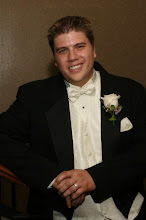This is my first entry on my blog and I thought I would like to discuss various technological recourses I use when teaching music to my elementary school aged children. I first came up with this idea for this post when I was asked to compile a list of favorite internet sites for an assignment in class.
The Dallas Symphony Orchestra (http://www.dsokids.com) maintains a website that is designed help students learn about music. The site is also designed for teachers to be able to utilize the information in creating lesson plans. The entire site is interactive in that students are able to play the piano or draw on the virtual chalkboard. Links to this site include: Composer Corner, Instrument Encyclopedia, and Orchestra Seating Chart to name a few.
I use this site in particular when I am teaching music history to my fifth graders. During this unit students are responsible for researching and writing a paper on a composer. The Composer Corner offers information on various composers that are arranged by historical periods. As a teacher I can print out individual bios or direct students to the website where they can look up their assigned composer.
Another aspect of this site I like to use when I am teaching third graders is the Instrument Encyclopedia. This portion of the site shows students to the correct classification of the instruments. Students are also able to see pictures and hear what the instrument sounds like both individually and in the context of the orchestra. This really allows students to hear how woodwind instruments sound different from brass instruments. Each link is about the individual instrument and contains a synopsis about the instrument.
Phil Tulga is musician that put forth a website that takes a cross-curricular approach to teaching music in his website entitled, Music Thru Curriculum (www.philtulga.com). This idea of cross-curricular education is another topic I addressed in an assignment for class. Cross-curricular teaching has to deal with teaching students a subject matter while including aspects of another subject. This site illustrates this idea by mixing music with core subjects such as math, reading, and science. Musical fractions are introduced to help students visualize rhythms. Not only is this helping the student grasp fractions in math, but the site uses fractions to help them with rhythms as well. Science is also illustrated by showing how sound waves work and how different sound waves can be combined to create various harmonies. Other ideas are also available for the teacher to use in the classroom such as instrument making ideas and a way to have the students create their own rhythmic compositions.
In conclusion DSO for Kids is great site to help students learn about composers and musical instruments. Phil Tulga’s page gives teachers great ideas on how to incorporate cross-curricular activities into their lessons.
Itashiki, M. (2006). DSO for Kids. Retrieved May 27, 2009, from http://www.dsokids.com
Tulga, P. Music Through Curriculum. Retrieved May 27, 2009, from www.philtulga.com
Wednesday, May 27, 2009
Subscribe to:
Posts (Atom)

